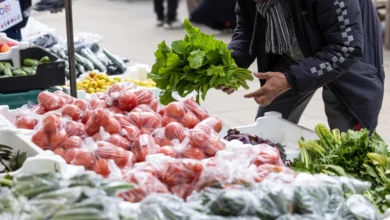Cairo recently played host to Spanish Gastronomy Week. Organized by the cultural section of the Spanish Embassy, this festival brought several renowned Spanish tapas chefs, along with leading Spanish restauranteurs, over to Cairo for a week of fine dining, cultural exchange, and plotting over how to advance the cultural and gastronomic ties between the two countries. Over the course of the week, a plan was cooked up (no pun intended) whereby Spanish and Egyptian chefs will trade skills and experience, and a Spanish-supported culinary institute for Egyptian chefs will be established.
The cultural section of the Spanish Embassy has long punched above its weight class within Cairo’s cultural circles, and this event, drawing upon the services of a Spanish delegation led by Rafael Anson, President of the Royal Spanish Academy of Gastronomy, lived up to expectations. Spanish Gastronomy Week was held in cooperation with the Egyptian Tourism Authority and the Egyptian Chef’s Association, and Minister of Tourism Zoheir Garannah and Chef’s Association Chairman Ahmed Al-Nahas were on hand to help charm the guests. There are obviously some synergies to be captured between food and tourism in emphasizing the glorious Mediterranean culinary traditions that the two countries share.
The arrival of such superlative tastes on Cairo’s storied streets causes delight and depression simultaneously for local foodies. A delight of course; it’s not often that such tastes are available locally. Depressing as an evening like this shows us what food can be, and how far we have to travel to match the gastronomical exquisiteness of our northern Mediterranean neighbors.
The Spanish clearly delight in their tastes. At a recent evening reception in celebration of the event, the food that was produced bordered on art; simple, quality, prepared with breathtaking attention to detail. The offerings were based around the concept of the tapas. Each taste was carefully and painstakingly thought through, and all ingredients were imported from Spain.
Of the endless trays that circulated, some of the standouts in my mind were a gazpacho that was elegant and bold; Ajoarriero, a thick garlic soup whose recipe was originally laid down by Don Quixote; a bacalou that was simple, allowing the taste of the fish to speak for itself, while at the same time managing a delicate, suffused taste; and torrijas, lightly fried bread redolent of sugar and honey. Alas, Spanish Gastronomy Week is now over, but lest you fear you’ve missed out on the action, I’ve included recipes for two of my favorite tapas from the evening below.
These delightful dishes, served on the terrace of the Intercontinental Hotel at City Stars, were the product of Spanish chef Luis Ribas, from Santander, known in Spain for his emphasis on provincial cooking using seasonal ingredients. The tapas were accompanied by wines from the Enate vineyard from Huesca in the north of Spain, and a variety of grapes and wines were paired with the tapas of the moment. Toward the end of the evening, a case from Enate’s reserve cellar was produced; as much progress as has been made in Egyptian wineries in recent years, wines like this remind us of how far local vintners have to go in order to become truly competitive.
Now, having been somewhat unkind toward Egyptian gastronomy in the above paragraphs, let me now make something of a counter-claim, by asserting the Mediterranean-ness of the Spanish food tradition, and by arguing that Egyptian cuisine could easily be just as glorious.
The first comparison that is ripe to be made between the two food traditions is with Spanish tapas on one hand and Egyptian mezze on the other. Both are light bites taken in a social setting, often comprising the entire meal, promoting a long, lingering, social experience. In this way, the two countries share a most Mediterranean tradition. Similar dining experiences can be found in Barcelona, Beirut and everywhere in between. Another comparison that might be made, especially in light of the late evening Flamenco show that followed the tapas, is between both cultures’ popular dancing traditions. Comparing Flamenco with belly-dancing may be significantly outside of my area of expertise, but I think that some interesting hypotheses about the shared cultural trajectories of Egypt and Spain can be made through a glimpse of these two highly-charged cultural, popular, vivacious dancing traditions.
Rather than ending the evening depressed for not having more regular access to the glorious Spanish food tradition, I instead found myself thinking how Spain, Egypt, and the rest of the Mediterranean may be years ahead of global culinary trends. In health circles around the world these days, people are endlessly emphasizing limited portions, fresh ingredients, and food at the center of socialization and societal health. As the rest of the world wakes up to the glories of local, social dining, the Mediterranean, including Egypt, can proudly make the case that it’s about time that the rest of the world has rediscovered what has been apparent here and elsewhere around these storied shores since the dawn of time.
It’s not so hard to imagine Egypt regaining its place as one of the glorious food traditions of the Mediterranean world. Leave aside the escalope penne; bring back thick, delicious baladi bread, in all of its regional and seasonal varieties. Get back to simple tastes extraordinarily done. The Spanish are clearly serious about their food. Let’s take not only their tourists, let’s also take from them their delight in beautiful food. Comer, beber, hablar, and, perhaps, baillar. Long live food.
Recipes:
Traditional Adalusian Gazpacho
Ingredients:
* 1 kilo tomatoes (preferably plum tomatoes)
* 1/2 small onion
* 1 small green pepper
* 1 small cucumber
* 1 small cup of olive oil
* 2 teaspoons of vinegar
* 200 grams of bread from the day before, soaked in water
* Small portions of diced tomatoes, red and green peppers, cucumber, onion and bread or croutons to sprinkle on top.
Preparation:
1. Put the tomatoes, onion, pepper, cucumber, vinegar, oil and bread into a blender. If you want to dilute it, add a glass of water. If you want to go for a tangy garlic taste, add a small amount of fresh garlic to the mixture before liquidizing.
2. Put the mixture into a bowl, add salt and pepper and leave the gazpacho to chill for at least an hour. If you want to eat it straight away, you can put some ice cubes in to cool it down.
3. Serve the gazpacho in soup bowls, with the portions of diced tomatoes, pepper, cucumber, onion, croutons etc. on the table, to add to taste.
Torrijas: Spanish sweet fried bread
Ingredients:
* 4 cups milk
* olive oil
* 2 cups honey
* 2 cups sugar
* 8 eggs
* Slices of bread
Preparation:
1. Cut a large loaf of bread in fairly thick slices. Mix the milk and sugar in a deep bowl. Beat the eggs in a separate dish. Dip the slices of bread in the sugared milk and eggs and fry in a pan with boiling oil until golden brown. Then drain well.
2. Place the torrijas on a serving dish and pour honey over them. It is also traditional to add the sugared milk to the serving dish so that the torrijas soak it up and become spongier.




